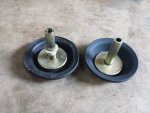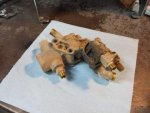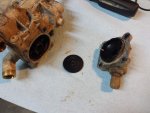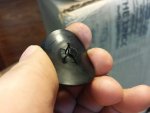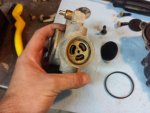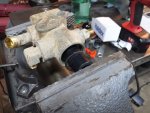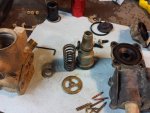- 518
- 179
- 43
- Location
- Stoneville, NC
I wanted to share some of the information I have learned about the LMTV / FMTV air brake system. I encourage you to also share the tips/tricks/etc you have found. Please do not post troubleshooting questions in this thread, let's keep this one for sharing solutions. If you are actively troubleshooting yours, start a new thread and once we figure out the problem, we can post the relevant info here. Also a big thanks to those that have posted troubleshooting tips in other threads, it was very helpful.
Most of the air brake components are Haldex including brake chambers, valves, etc. One exception is the load sensing proportioning valve which was made by Grau. While everything has a military part number, some of those are direct civilian numbers, and some are not. Some parts can still be matched up to their civilian equivalent. Napa can order probably any Haldex parts that you have a number for. I have ordered two-way check valves and a valve rebuild kit for the tractor protection valve.
I'll start off with the two-way check valves that are used on the truck. There are at least 4 of them used on the truck. Three of them are mounted behind the driver's side step area on the backside. One of them is located at the rear close to all the other valves mounted up on the crossmember. These are Haldex KN25060. The rebuild kit is Haldex RN11V. I had a problem where air would dump from the front emergency gladhand when the parking brakes were released. There was a two way check valve with a bad diaphragm. Of the three valves behind the driver's step, it was the topmost one, the one with a sensor also plumbed into it. The diaphragm in these valves will go bad, so I would suggest going ahead and ordering a couple rebuild kits to have on-hand.
Most of the air brake components are Haldex including brake chambers, valves, etc. One exception is the load sensing proportioning valve which was made by Grau. While everything has a military part number, some of those are direct civilian numbers, and some are not. Some parts can still be matched up to their civilian equivalent. Napa can order probably any Haldex parts that you have a number for. I have ordered two-way check valves and a valve rebuild kit for the tractor protection valve.
I'll start off with the two-way check valves that are used on the truck. There are at least 4 of them used on the truck. Three of them are mounted behind the driver's side step area on the backside. One of them is located at the rear close to all the other valves mounted up on the crossmember. These are Haldex KN25060. The rebuild kit is Haldex RN11V. I had a problem where air would dump from the front emergency gladhand when the parking brakes were released. There was a two way check valve with a bad diaphragm. Of the three valves behind the driver's step, it was the topmost one, the one with a sensor also plumbed into it. The diaphragm in these valves will go bad, so I would suggest going ahead and ordering a couple rebuild kits to have on-hand.



